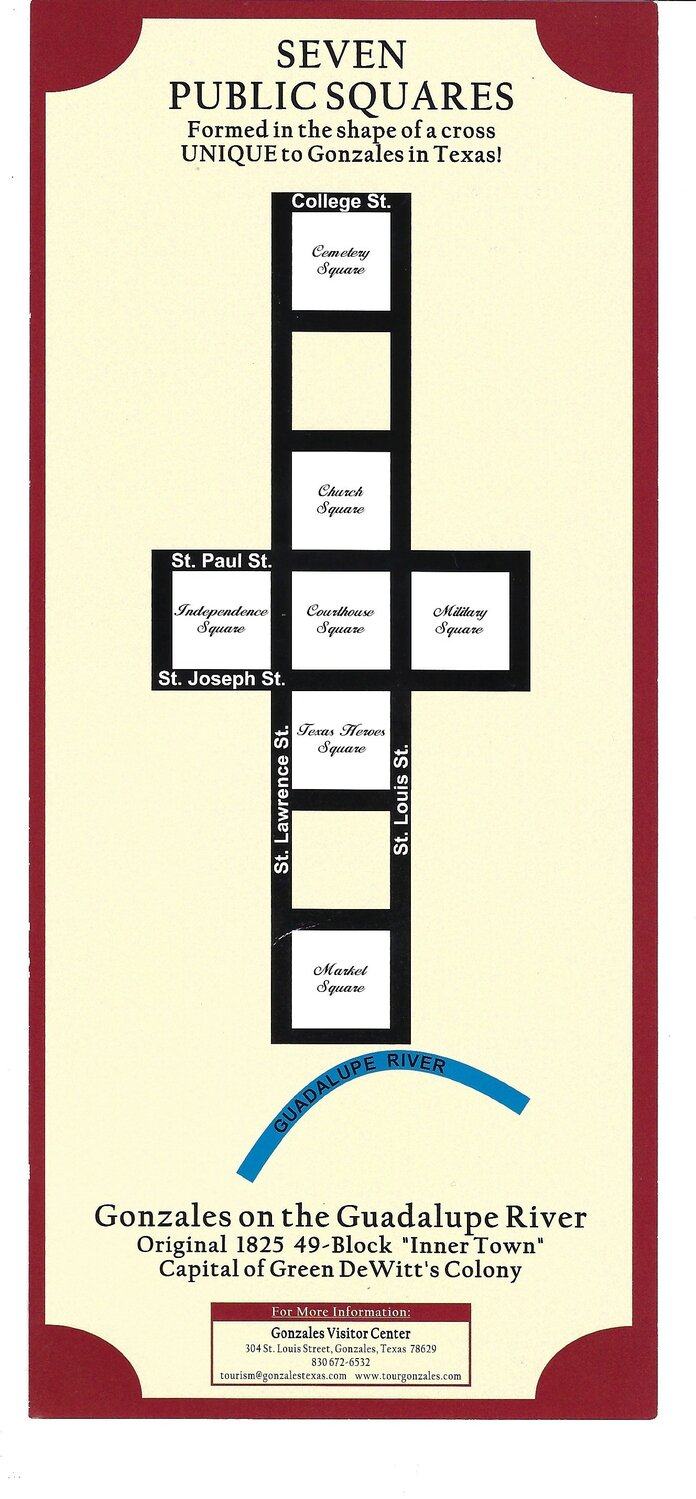Gonzales County Historical Commission to host DeWitt Colony bicentennial luncheon
The Gonzales County Historical Commission will host a luncheon in May to honor the upcoming bicentennial of Green DeWitt’s Colony and the Gonzales County Commissioners Court pledged Monday, April 8 to co-host the event and provide $1,500 to help fund it.
The May 16 luncheon will take place at the classrooms building at the old Edwards High School campus and will include a program featuring Doug Kubicek of the Lavaca County Historical Commission and singer-songwriter and Texas historian Fletcher Clark.
Gonzales County Historical Commission Chair Glenda Gordon said the county judges and historical commission chairs from all six counties which were part of or contributed to the DeWitt Colony will take part in the luncheon.
“My whole purpose in all of this is to begin educating the population of Gonzales, the city of Gonzales, Gonzales County, and hence the world, as to ‘What was the DeWitt Colony?” Gordon said. “‘What was happening here? What does it look like?’ That's the umbrella focus of all of the activities that the county historical commission is participating in and doing the planning, and I'm very happy to be able to lead that group of historians.”
Empresario Green DeWitt was granted a contract in April 1825 to settle 400 Catholic families into South Texas in an area near the Guadalupe, Lavaca and San Marcos rivers.
DeWitt’s surveyor, James Kerr, placed the capital of the colony at the confluence of the Guadalupe and San Marcos rivers and named it Gonzales after Rafael Gonzales, provisional governor of Coahuila y Tejas, and the first settlers arrived in Gonzales in the summer of 1825.
Gordon noted the original town was designed in the shape of a Spanish cross (sometimes called a Greek cross) with seven public squares — the center being Courthouse Square bounded by Saint Joseph, Saint Paul, Saint Lawrence and Saint Louis streets.
Other squares include Independence Square (directly north of Courthouse Square); Military Square (directly south of Courthouse Square); Texas Heroes Square (directly west of Courthouse Square); Church Square (directly east of Courthouse Square); Market Square (the area between U.S. 183 and Saint John Street) and Cemetery Square (between Hamilton Street and College Street).
“We are unique in Texas to have this early Spanish cross design,” Gordon said. “It is the center of our community and I think the Courthouse is the center of the cross. The symbolism there is truly for the people.”
The courthouse was designed so that each of the four doors is located in a separate precinct, so each of the four precincts has its own designated “door” in the building.
After Texas gained its independence in 1836, Gonzales County was established as one of the original 23 counties of the Republic of Texas.
DeWitt County was created in March 1846 from portions of Gonzales, Goliad and Victoria counties, while Lavaca County was formed one month later from parts of Gonzales, Colorado, Jackson and Victoria counties. In March 1848, Caldwell County was created from portions of Gonzales and Bastrop counties.
Two others counties which adjoin Gonzales, but were not created from the original DeWitt Colony, include Guadalupe County, created in March 1844 from Bexar County, and Wilson County, formed in 1860 from pieces of Bexar and Karnes counties.
The historical commission is planning to use $1,100 of the county’s $1,500 donation to have a catered buffet for the 30 invited guests at the luncheon and the other $400 will pay for the venue rental. The commission will spend $500 on commemoratives and an information packet to be distributed to attendees, Gordon said.
“This is the first of many activities that we are beginning in 2024 to introduce the colony to the rest of the county and the rest of the state. On Sept. 28, we’re having a DeWitt’s Colony Bicentennial Symposium that is a big hoo-hah to come to and to tell about their contributions to Texas history from 1825 up to the Republic of Texas,” Gordon said.
The September event will feature the Edwards High School gymnasium as well as Pioneer Village, which Gordon said “is going to be the heart of the interpretation of the DeWitt Colony, as well it should be.” That event will be co-sponsored by the Green DeWitt’s Colony Association and Preservation Gonzales Inc.
This month, the entire Gonzales Junior High School seventh grade will take part in a tour of Pioneer Village as well as a history day at Kerr Creek to learn of the founding of the DeWitt Colony, Gordon said.
“I’m very excited about that, because telling our children about the history of our community is one way of making those connections last a little bit longer,” Gordon added. “Preservation is more than buildings and the restoring of those buildings. We are about preserving the history of our community.”
Comments






